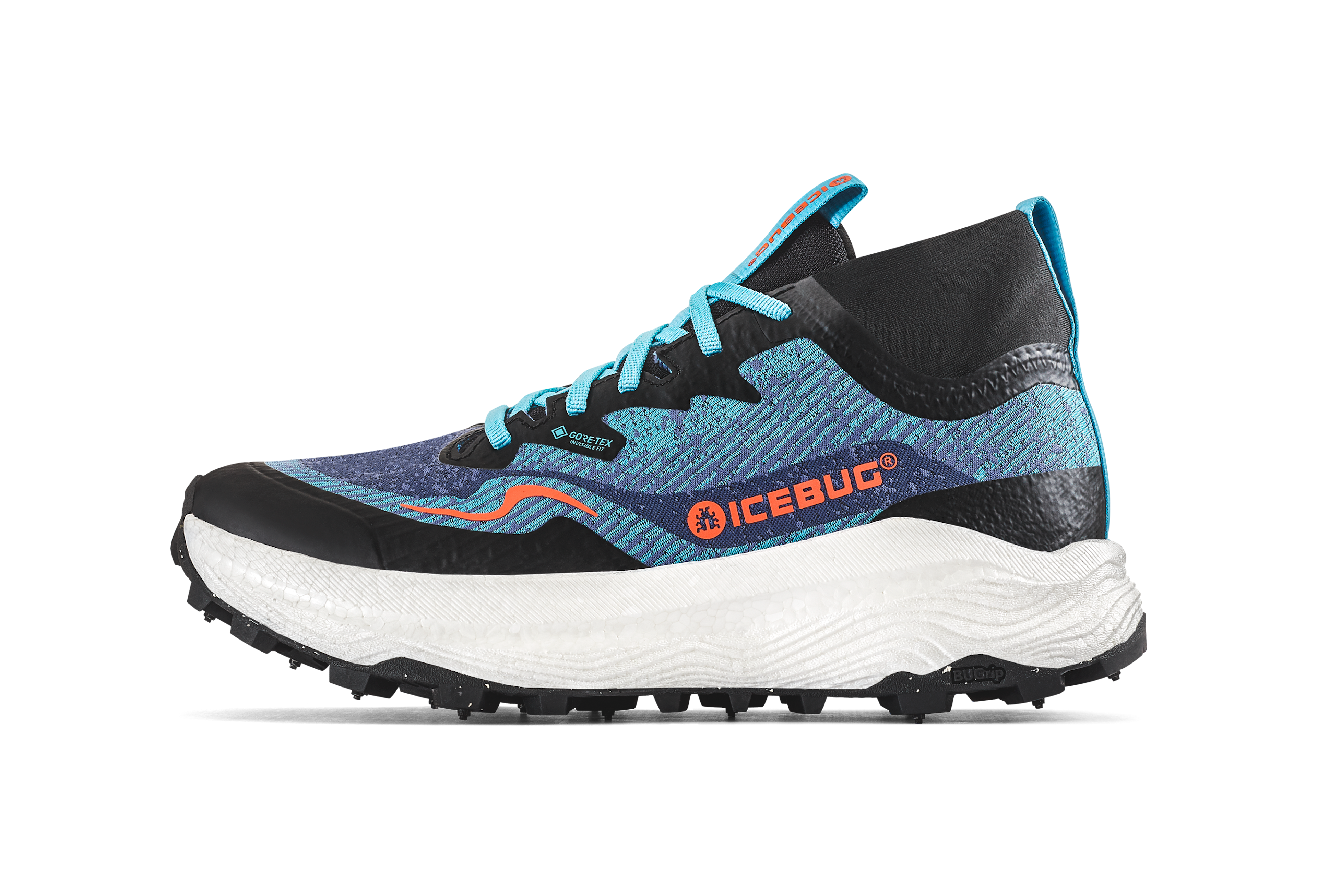

Järv Gaiter Men's BUGrip GTX - IceBlue
249.95 USD
)
)
Trail running isn’t just about endurance – it’s about technique, focus, and harmony with nature. Whether you’re a curious beginner or used to roots and rocky trails, there are ways to make your runs both more enjoyable and more efficient. Here are five tips to help you find better flow, stronger strides, and more joy on every run.
)
Running in hilly terrain is about more than strong legs – your whole body needs to work. Your arms play a crucial role both uphill and downhill. The more technical the terrain, the more naturally your arms move – a dynamic interaction often called “paddling.” Once you learn to use your arms actively, you’ll notice how much easier running feels, no matter the incline.
Exaggerate your arm swing on steep climbs. The movement helps build momentum and gives extra power when your legs start to tire. With every step, let your arms drive the rhythm. Keep your elbows close to your body and focus on swinging your arms backward rather than upward – this generates more power going uphill.
Downhill, your arms are more about balance than power. Raise them slightly and hold them wide to stabilize your body. By engaging your arms, you can quickly correct balance if the surface shifts or your speed increases faster than planned.
When running uphill, it’s generally recommended to take shorter steps and increase your cadence slightly. Also, remember to lift your knees so each step counts, and avoid leaning too far forward.
When running downhill, dare to let go and make use of the “free speed” that gravity offers.
– Stride lengthens and ground contact time shortens.
– Your posture should be slightly forward-leaning from the hips, allowing you to “fall” naturally with the slope.
– As your speed increases, don’t get passive with your foot placement – stay focused. On uneven terrain, losing focus can easily lead to missteps or twisted ankles.
The terrain sets the pace. Steep climbs, muddy patches, and rocks will slow you down even when your effort stays the same. That’s not a sign of running slowly – it means you’re running smart.
Your watch is a great tool, but let it support you, not control you. Focus on heart rate, elevation gain, and perceived effort rather than pace. In trail running, we recommend finding flow and rhythm instead of chasing seconds.
Keep that in mind when you run – it’ll help you build both strength and joy.
Trail shoes like Järv Gaiter BUGrip or Arcus 2 RB9X are designed to provide stability, protection, and grip on uneven ground. They feature a stable midsole, durable upper materials, and reinforcements that protect against rocks and roots.
Our outsoles are engineered to grip mud, gravel, and rock without losing traction – here, our RB9X rubber compound plays a key role, ensuring reliable grip on both wet and dry surfaces.
If you need maximum grip in the toughest conditions, choose running shoes with our BUGrip traction. Dynamic carbide steel studs adjust to the surface, giving you reliable traction on everything from black ice and slushy snow to muddy trails and asphalt.
Interested in learning more about our traction technologies? Read more here.
Running on trails or in challenging forest terrain requires focus. The ground is alive – roots, rocks, and uneven surfaces appear constantly. That’s why you need to develop your “split vision”: the ability to keep track of where your feet land while planning your next step – at the same time.
Keep your gaze just ahead of your feet, not directly at them. This way, you can read the terrain in advance and choose the best line forward. At the same time, maintain a longer view to make quick route decisions. Once you’ve trained this skill, it becomes easier to find a natural rhythm where your stride and flow work seamlessly together.
At Icebug, we want to make really good shoes that help you get outside every day, no matter the weather or season. Our goal is to change the footwear industry by taking responsibility for our climate footprint. We make shoes that last, with low emissions and respect for both people and the planet. Part of what you invest in us, we give back to the Earth – for example by supporting organizations that protect old-growth forests.